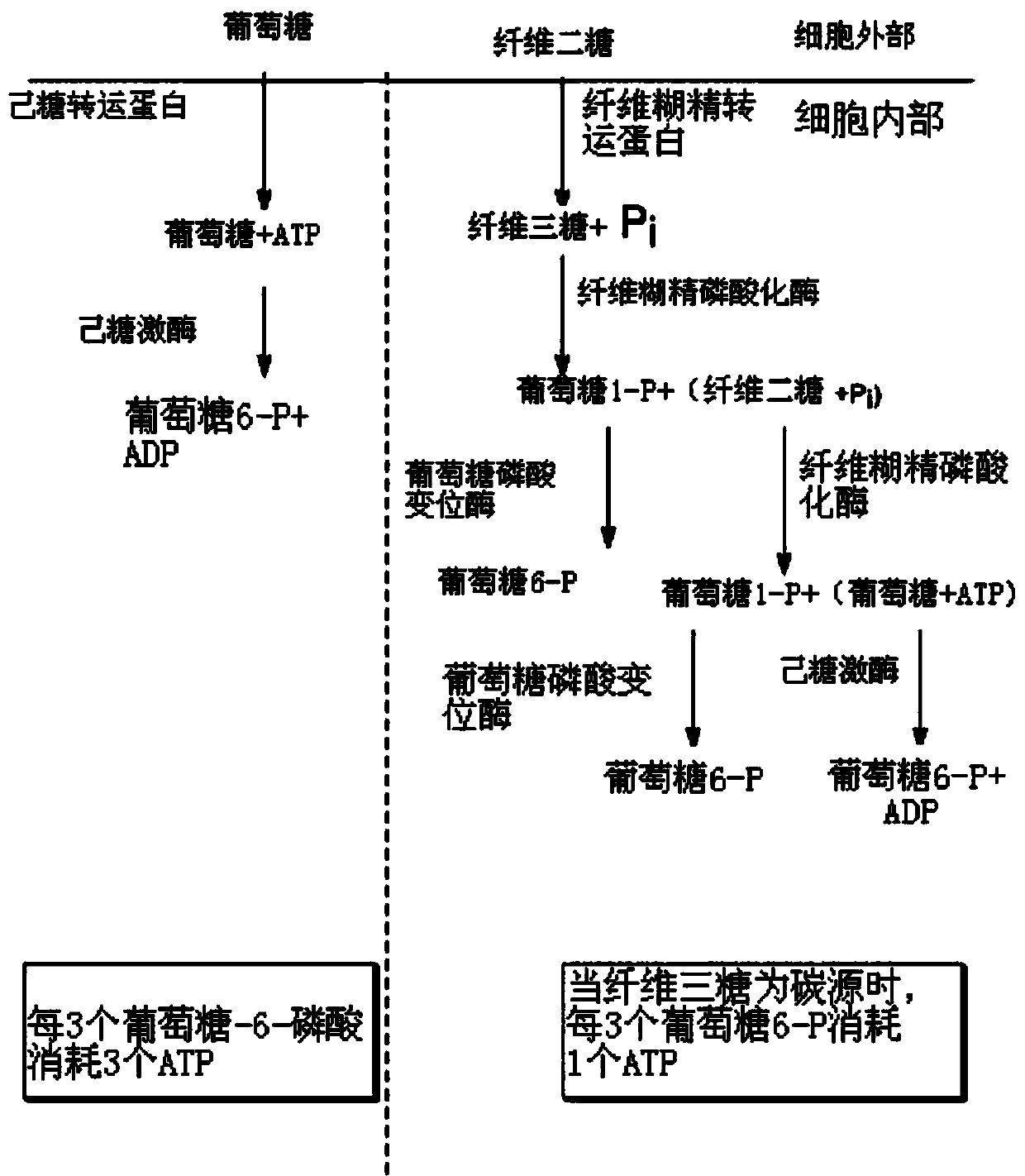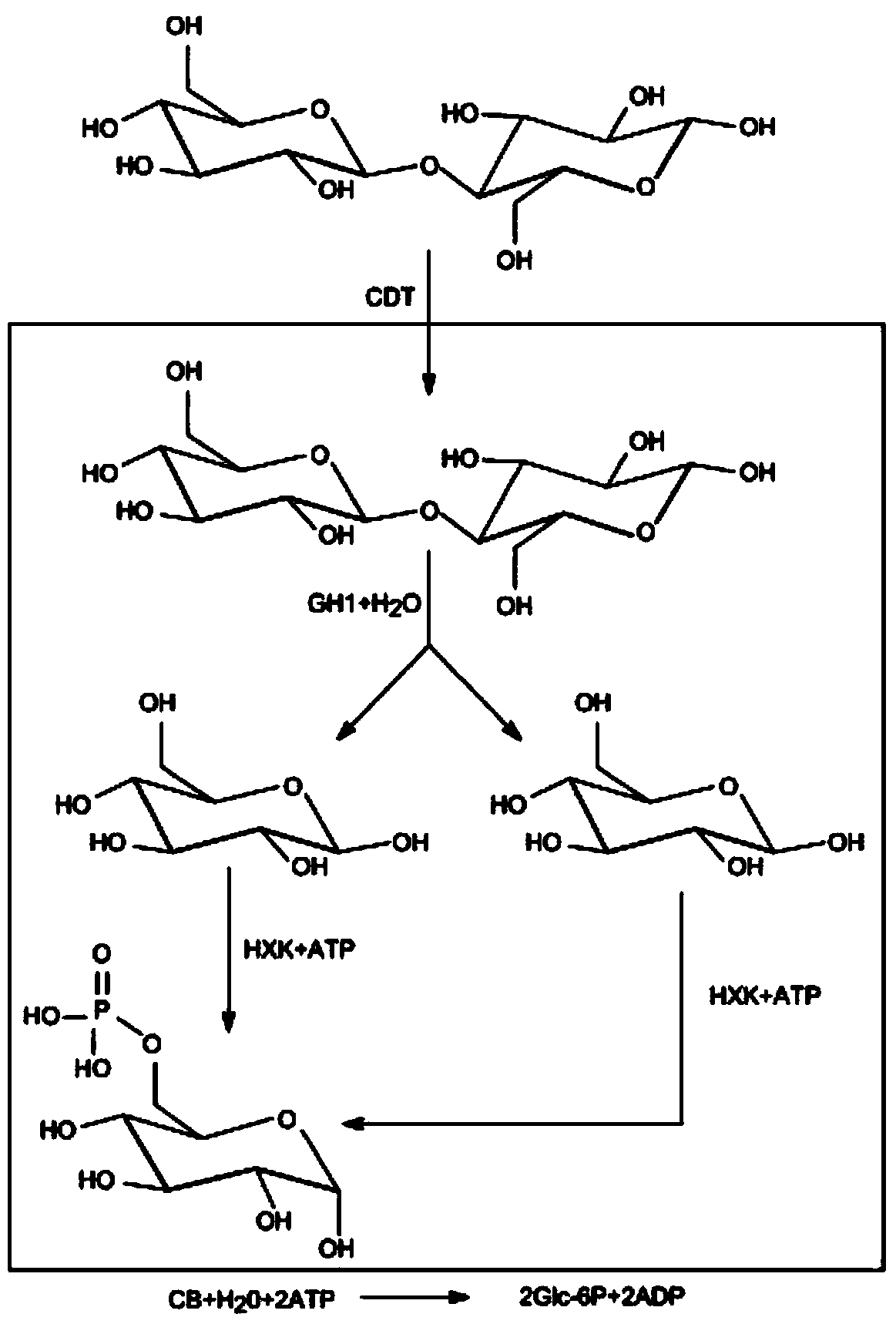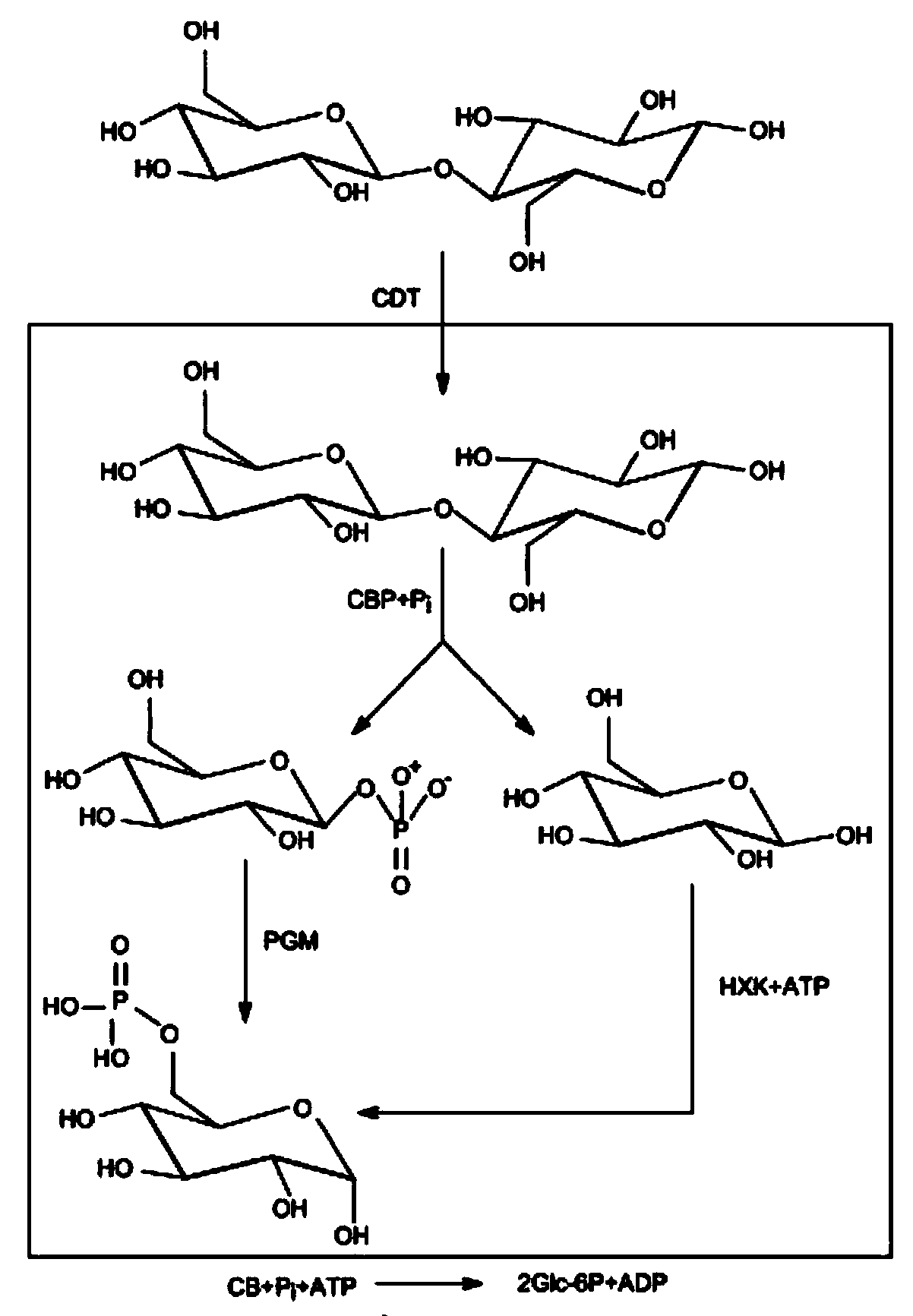Enhanced cellodextrin metabolism
A technology of cellodextrin and dextrin, applied in the direction of transferase, peptide, enzyme, etc., can solve problems such as determination
- Summary
- Abstract
- Description
- Claims
- Application Information
AI Technical Summary
Problems solved by technology
Method used
Image
Examples
preparation example Construction
[0419] Other aspects of the invention relate to the preparation of host cells containing recombinant cellodextrin transporter, recombinant cellodextrin phosphorylase, recombinant β-glucosidase, recombinant glucose phosphomutase or recombinant hexokinase one or more. In some embodiments, the host cell may further comprise one or more glucose response genes of the invention, one or more pentose transporters of the invention, and / or genes involved in pentose utilization, of one or more recombinases. These host cells can be used to degrade cellodextrins and produce carbohydrates or carbohydrate derivatives from cellodextrins.
[0420] The method of producing and culturing the host cell of the present invention may comprise introducing or transforming an expression vector containing the recombinant polynucleotide into the host cell. Those of ordinary skill in the art are aware of these methods for transforming expression vectors into host cells. For example, one method of transf...
Embodiment 1
[0463] introduction
[0464] Engineering microbes to convert sugars found in plant cell walls into fuels and other chemicals has garnered considerable attention. Plant cell walls are composed of cellulose (a polymer of glucose), hemicellulose (a heterogeneous polymer of pentoses, hexoses, and sugar acids), and lignin (a heterogeneous phenolic polymer). Plant cell walls are abundant in agriculture and municipal waste, and are dedicated energy crops. The yeast, Saccharomyces cerevisiae, is a favored platform for these engineering projects because of its stability, ease of genetic manipulation, and ability to undergo high-carbon transitions. In addition to this, Saccharomyces cerevisiae has numerous deficiencies including inability to naturally ferment pentose sugars, sensitivity to solvents and sensitivity to inhibitory compounds found in decomposed plant material.
[0465] Another drawback is that Saccharomyces cerevisiae cannot naturally ferment cellodextrins, such as cellob...
Embodiment 2
[0567] This example describes the identification of conserved motifs for cellodextrin phosphorylases and the identification of additional cellodextrin phosphorylases.
[0568] The first round of PSI-BLAST was run with Clostridium thermocellum (BAA22081.1), Acidovibrio cellulolyticus (ZP_07328763.1) and Clostridium lentocellum (YP_004310865.1) cellodextrin phosphorylase amino acid sequences as simultaneous input. From the results of the first round, all query results annotated as "cellodextrin phosphorylase" were used as simultaneous input for the second round of PSI-BLAST.
[0569] From the results of the second round, all sequences annotated as "cellodextrin phosphorylase" were used to generate a multiple sequence alignment by T-COFFEE.
[0570] Use multiple sequence alignment as the PRATT server ( http: / / web.expasy.org / pratt / ) to identify the highest scoring motif. The motif is shown in PROSITE format:
[0571] G-x(2)-[FY]-x-N-[AGS]-x-[AS]-W-[APS]-V-[IL]-[AS]-x(2)-A-x(2...
PUM
 Login to View More
Login to View More Abstract
Description
Claims
Application Information
 Login to View More
Login to View More - R&D
- Intellectual Property
- Life Sciences
- Materials
- Tech Scout
- Unparalleled Data Quality
- Higher Quality Content
- 60% Fewer Hallucinations
Browse by: Latest US Patents, China's latest patents, Technical Efficacy Thesaurus, Application Domain, Technology Topic, Popular Technical Reports.
© 2025 PatSnap. All rights reserved.Legal|Privacy policy|Modern Slavery Act Transparency Statement|Sitemap|About US| Contact US: help@patsnap.com



